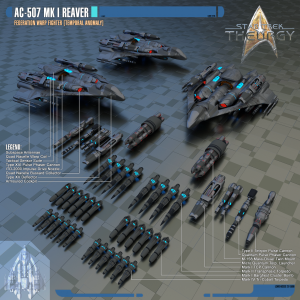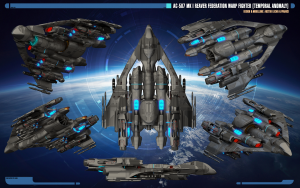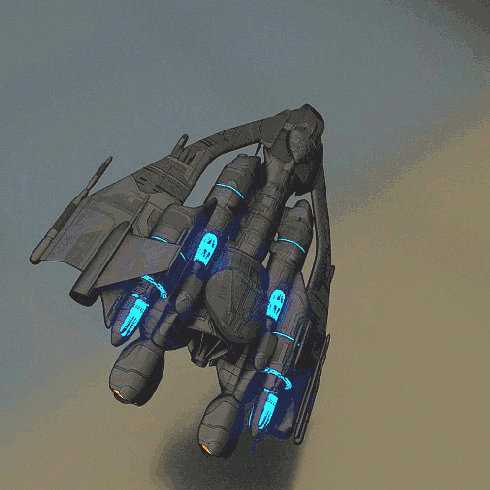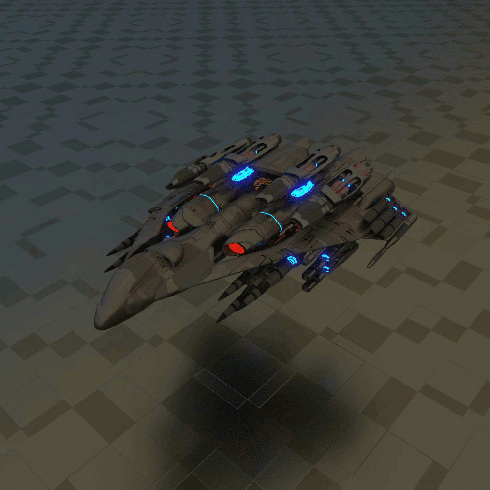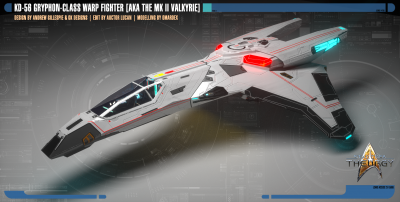AC-507 Mk I Reaver
From Star Trek: Theurgy Wiki
UNDER CONSTRUCTION
The Mk I Reavers were the kind of warp fighters that were commissioned to the USS Calamity.
Fighter Demonstration
Production History
[Insert Data]
External Hard-point Options
The Mk I Reaver can hold up to external wing-mounted hard points during missions, listed below.
Micro Quantum Torpedo Launchers
Additional, wing-mounted torpedo launcher that hold 28 micro quantum torpedoes per launcher. Recommended to mount two of these in order to balance the fighter properly. This means that the hard-point option of additional torpedo launchers hold 56 additional mirco-torpedoes since the Reaver itself doesn't carry any as standard internal armament.
Mk IV Tri-Cobalt Torpedo
X
X
X
X
Mk I Barghest Cluster Bomb
Similar to the nature of a tri-cobalt torpedo. Essentially, this is a torpedo filled with several micro tri-cobalt devices. Once the torpedo comes in contact with an enemy or a surface, it detonates and fragments into smaller charges, which spread from the point of impact, also exploding on impact, resulting in a large pattern of detonations. Deployed right, this hard-point may cause severe damage when scattered upon enemy shield impact. The torpedo snap open by spring-force, and both the arming and the fuze is pilot-controlled by either manual or automatic settings. It can be armed prior to discharge or scattered by manual command.
Mk II Transphasic Torpedo
X
X
X
X
M-158 Mass Driver Twin Mount Turret
Twin Dual Cannon guns utilising an ammunition replicator to create 30mm [insert data] shells. These shells are suspended in a small warp field bubble to render them nearly weightless before being electromagnetically propelled at a speed near mach 15 with a rate of up to 1200 rounds per minute assuming all 4 cannons are being fired. Devastating against soft targets as well as being effective against armours of nearly all types. However it is ineffective against shields, and its projectiles can be easily reflected via standard deflector arrays. The weapon can be placed in a fixed forward position or can be set to automatically track subsonic targets for fire, though it proves to be ineffective at automatically tracking fast moving small targets. It can hit large targets moving at high speeds but not with the same precision as expected with slow or fixed targets. Designed for aerial and suborbital assault on non-shielded Terrestrial targets, deep space strikes against bases, and aerial support of ground operations (see also information about the Valkyrie-mounted turrets).
Transphasic Shielding
[Insert Data]
Ejection Systems
Escape Pod
All Valkyries are equipped with ejection modules or "pods". These allow for rapid emergency egress from the vehicle in case of danger. Linked to dedicated high speed processors, automatic sensors can detect certain types of danger and initiate an eject sequence automatically. This is especially useful if the pilot has been rendered unconscious through a blackout or other injury and the vehicle is in danger of crashing.
Modules have self-righting mechanisms in their base to assure a correct orientation during landing. Landing is accomplished by a single use anti-grav module. Free falling until they are 3 meters from the ground, the ejection seat/pod activates the AG module, which burns out as it lands the unit (relatively) gently. The pod remains pressurized with approximately 20 minutes of air, allowing a pilot time to completely seal his suit and activate his personal survival equipment. Once ready, the pilot has the option of discarding the pod by activating a manual release.
The Mk II Valkyrie doesn't have an ETS (Emergency Transport System), unlike the Mk III.
